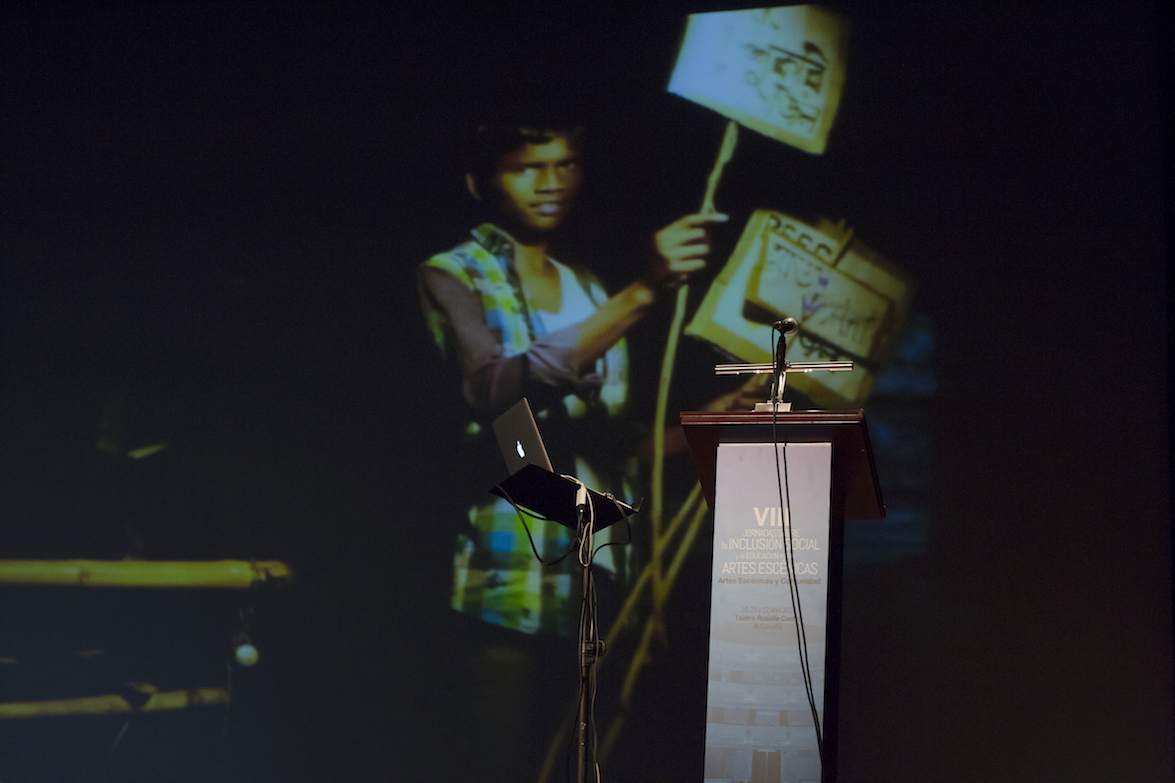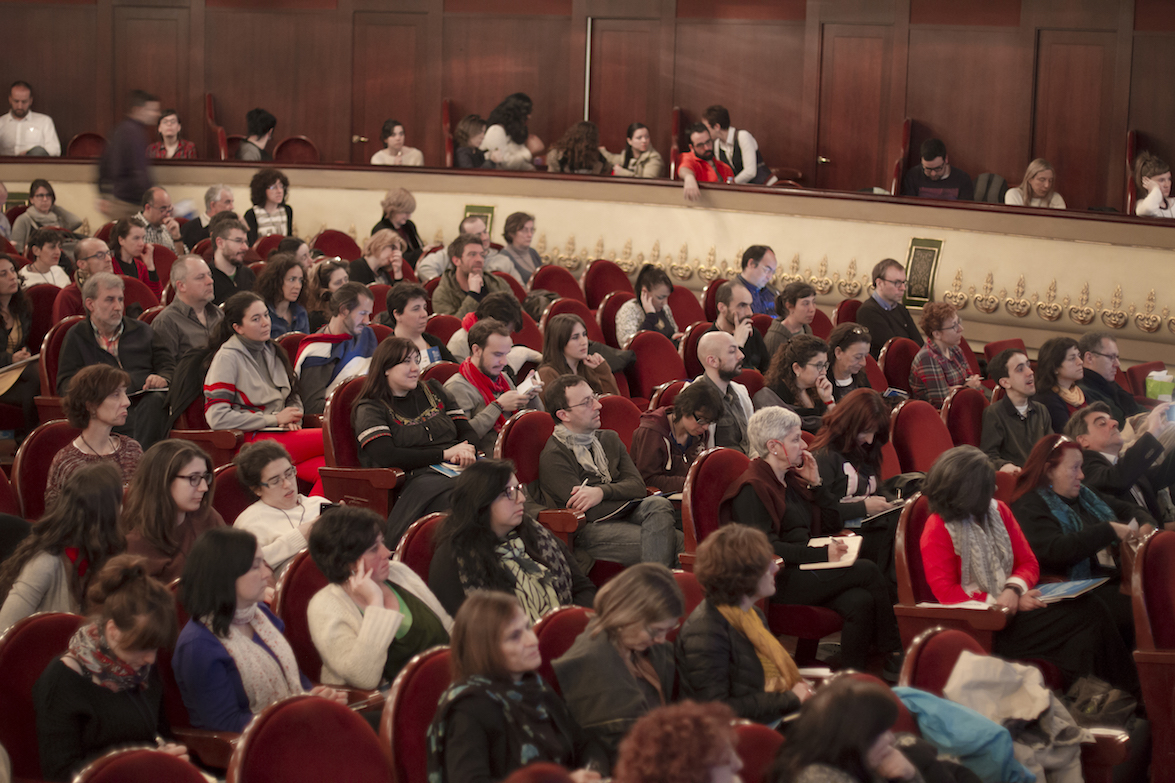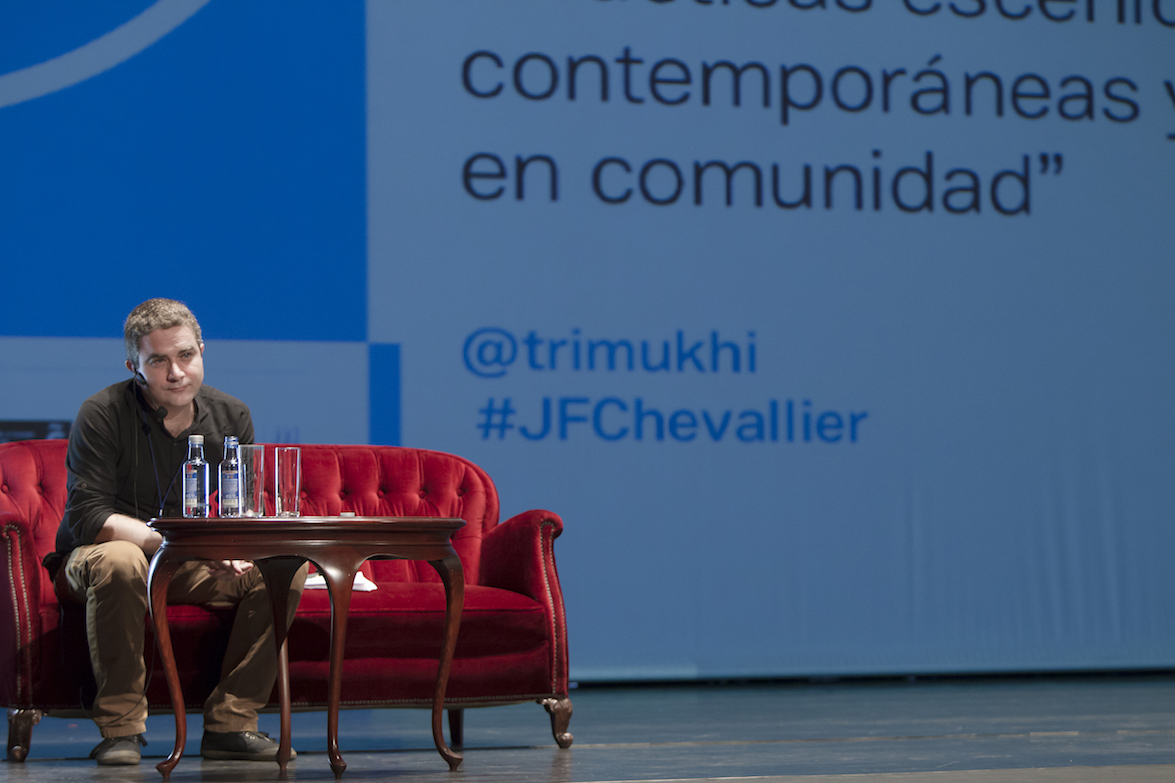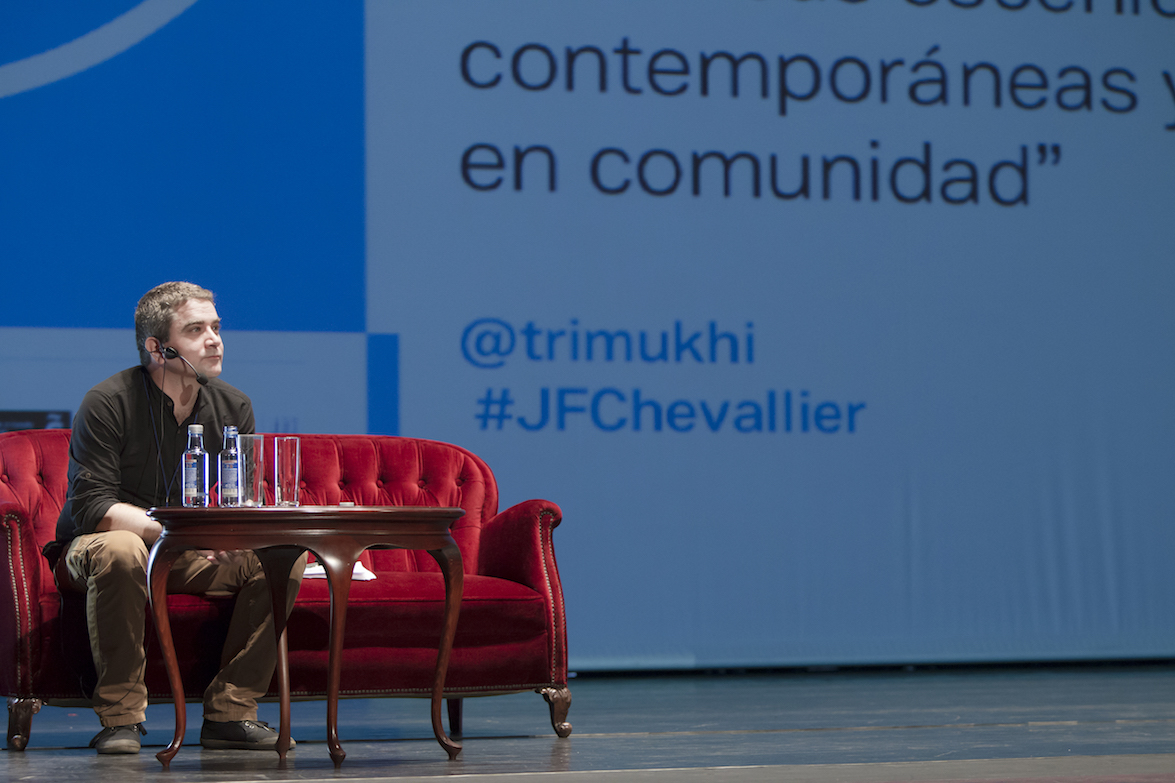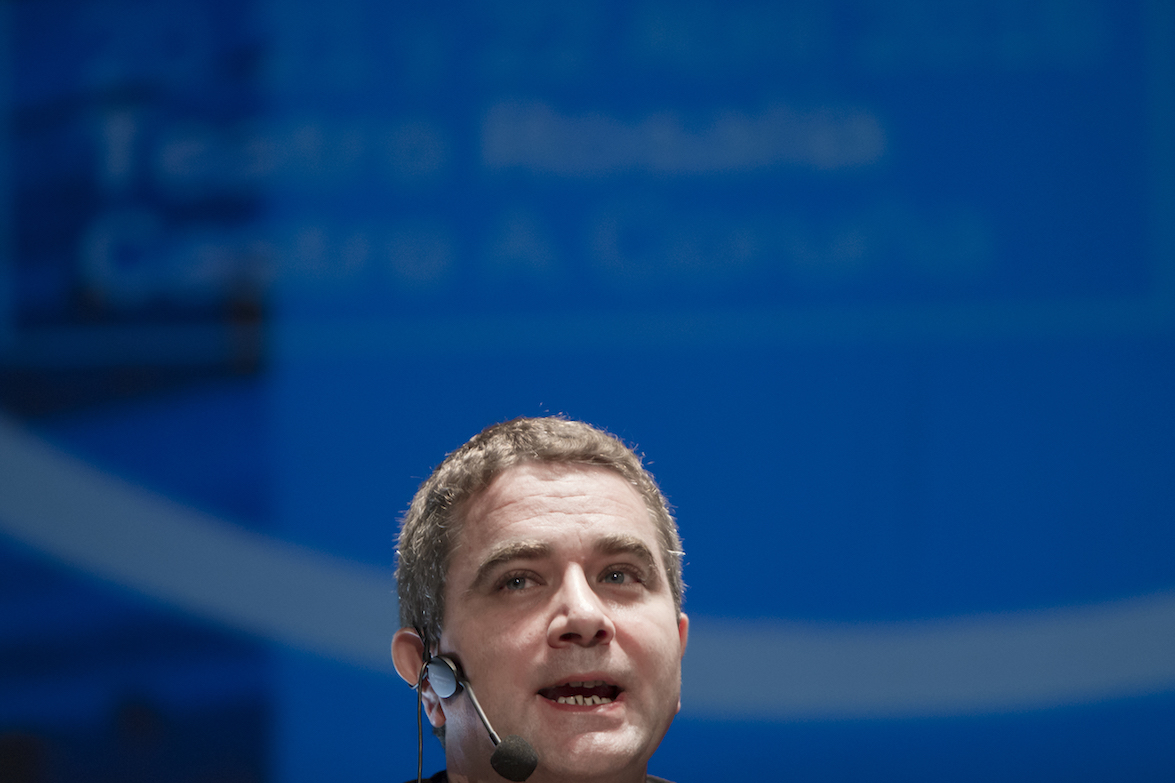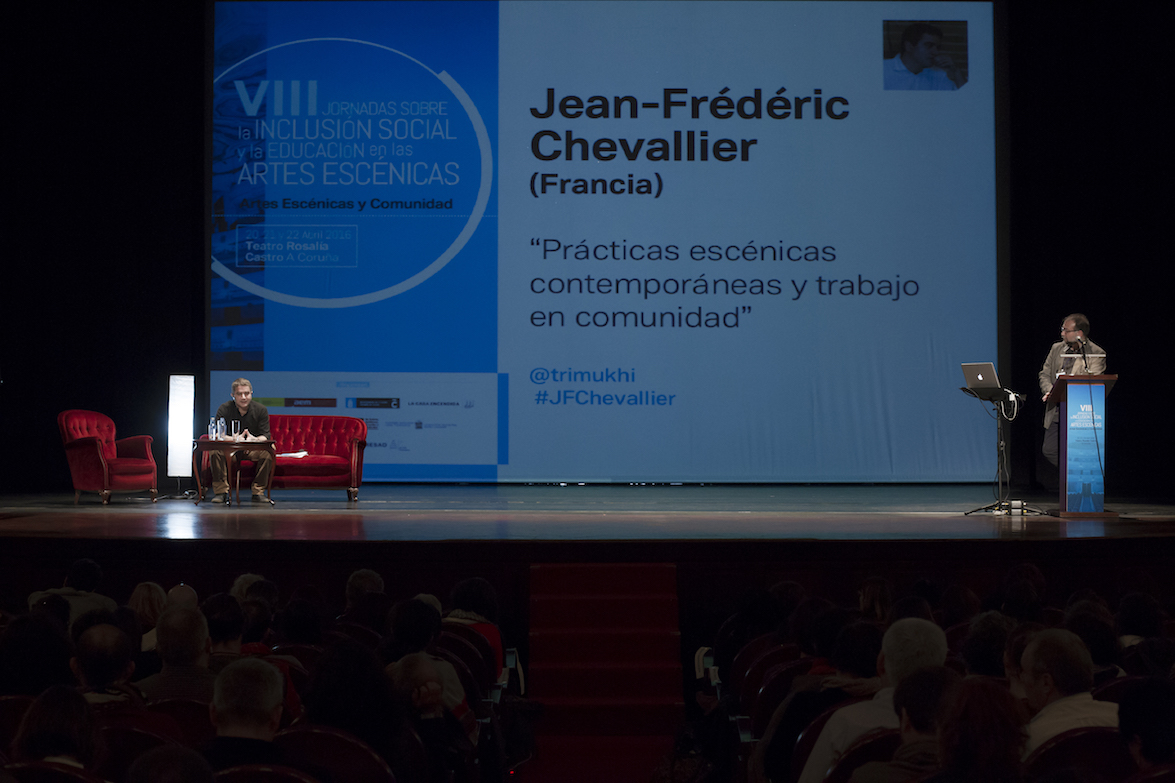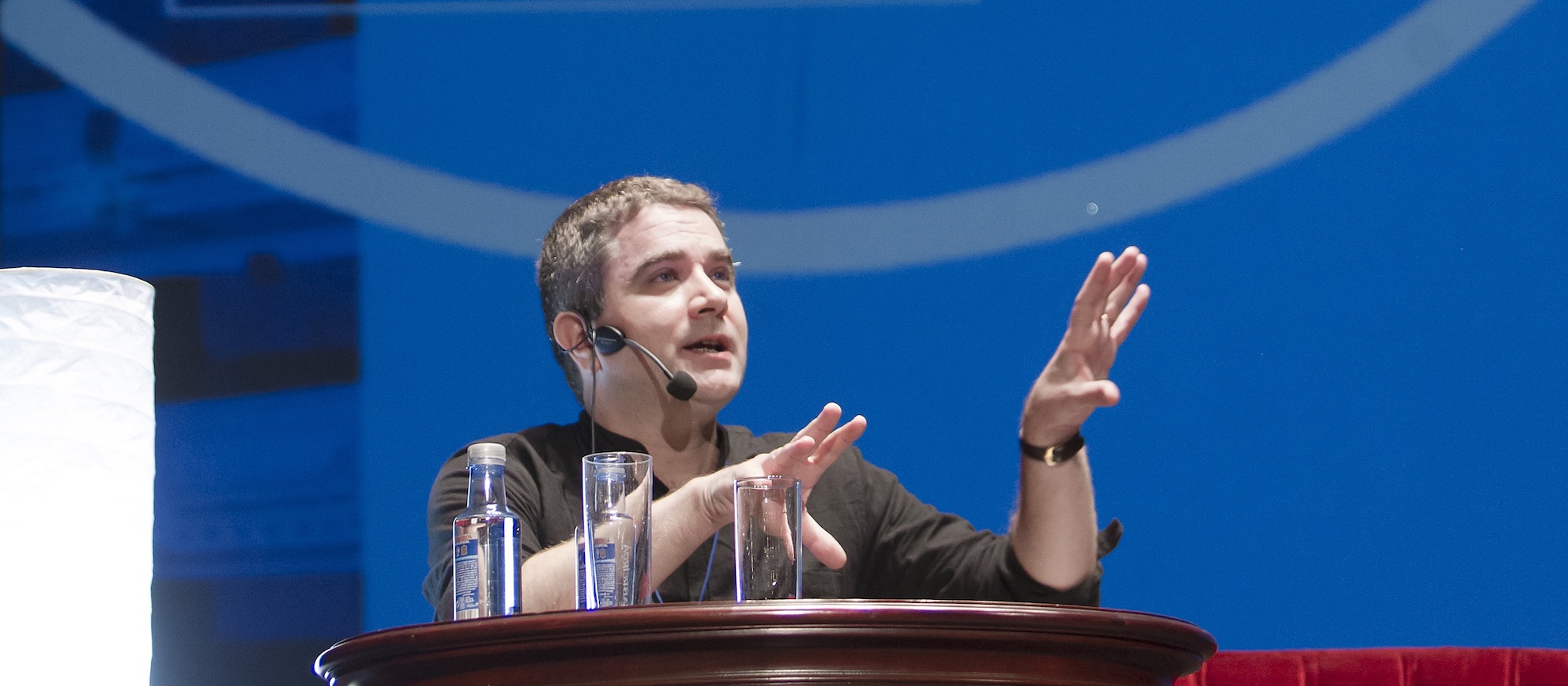home > menu > conversations & lectures > contemporary theatre and community practices
Focusing on examples taken from his personal experience in Borotalpada, and with short video projections so to make his analysis concrete and understandable, Jean-Frédéric Chevallier invites to reflect on the relationship between ‘theatre’ and ‘community’, and, by doing so, to rethink contemporary performing arts from a Santhal village. He starts his lecture like that: ” What I am interested in it’s the relation, the relationship, the ‘and’ in the title ‘Theatre and Community’, the dynamic of the ‘and’. To make you understand this dynamic, let’s suppose that my topic would be ‘lyric singing’ and ‘work in a grotto’. Very easily you could reach two conclusions. On the one hand, such a set-up will enhance, increase the sound possibilities as the grotto you have chosen has some acoustic qualities. On the second hand you would discover that, thanks to the sound vibrations, the rock shape gets or well get damage – depending on the kind of lyric singing you perform there. The ‘and’ between ‘theatre’ and ‘community’ is of the same kind. I want to ask what happen when we put Theatre and Community together. What are the effects on theatre if practiced in a community? What are the effects on the community to practice theatre? Of course it not that easy as it was with lyric singing and grotto. What a community is? For instance the world is not used in the same way in English, French or Spanish. In English, the anthropologist use it for any kind of group of living being. In French the use is much more restricted as very quickly the word can be associated with communalism. And the use in Spanish is in between. More than in French but not as extended as in English. And what is theatre? Because usually the problem we face when speaking about contemporary forms it’s the negativity. As Ariane Mnouchkine, we will say Trimukhi Platform is doing a theatre where the performer do not act any character. There is the ‘not’. How to speak about it positively – without using negation?”.
The talk was given first in Spanish at Teatro Rosalía Castro en A Coruña on April 20, 2016, as a key-note lecture for the inauguration of the 8th International Congress on ‘Social Inclusion and Education in the Performing Arts’ organised by the Spanish Ministry of Education and Culture. The lecture was then given in French at Université Paris Nanterre on June 20, 2017 first on January 28, 2016, and later on in English at Vidyasagar University, on March 21, 2018, as part of the International Conference on ‘Performance Art and the Prospects of Folkloric Tribal Culture of Eastern India’. In fact, at the genesis of this lecture, there was a five-day seminar that Jean-Frédéric Chevallier gave in La Havana from Septembre 29 to Octobre 3, 2014 at the invitation of Casa de las Américas and the French Embassy in Cuba. It involved scholars, sociologists, artists and arts students
THE LECTURE IN SPAIN
lecture proposed by
Ministry of Education and Culture, Spain
Paris Nanterre University, France
Vidyasagar University, India
French Embassy in Cuba
Casa de las Américas, Cuba
and Trimukhi Platform

